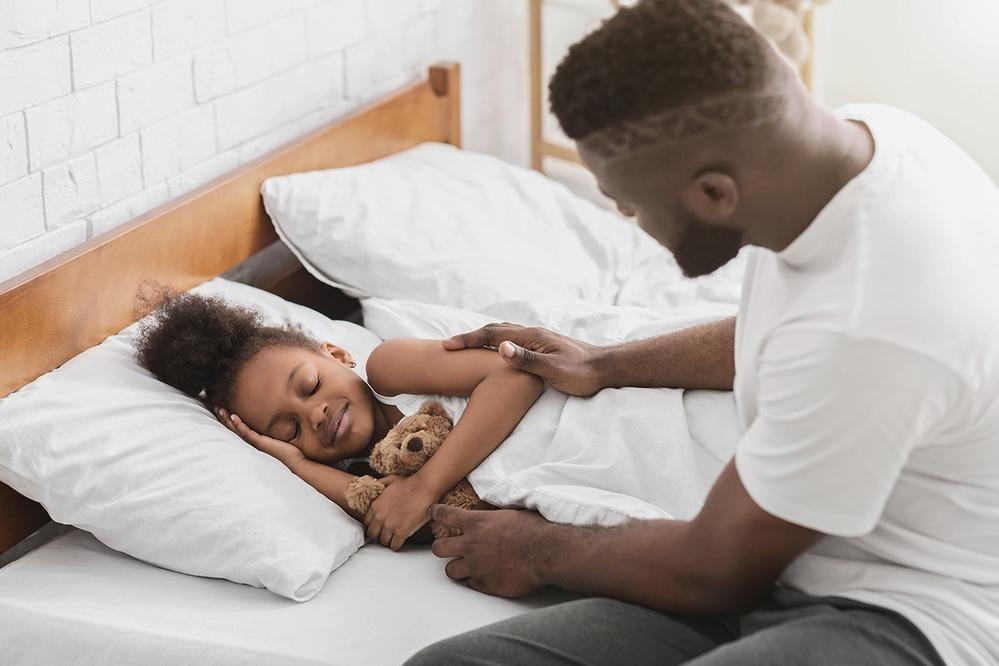PARENTS
The Secret to Surviving Daylight Saving Time With Kids
Whether you are springing forward or falling back, everyone will sleep better with these tips.

Written by
Dr. Harvey Karp

SHARE THIS ARTICLE
PARENT PICKS
Bestsellers
PARENTS

Written by
Dr. Harvey Karp

SHARE THIS ARTICLE
Bestsellers
Anything that disrupts the normal day/night (Circadian) rhythm can lead to sudden sleep problems…that includes moving the clocks for daylight saving time. Babies and toddlers are already prone to sleep ups and downs, so it is kind of disruptive that twice a year we upset their sleep (as well as their poor parents’ sleep) when we spring forward or fall back for daylight saving time. Fortunately, a little preparation can really help to navigate this challenge!
One way to make daylight saving time a little easier is to gradually shift your child’s bedtime over the few days before the day the clock changes. While adults may easily adjust to adding or losing an hour, kids do best when we nudge their schedules in baby steps.
Here is how it works: Every evening—for the 4 days before daylight saving time—shift dinner and bedtime 15 minutes earlier if in spring, later if in fall. (Four days tends to work well, but depending on your baby or toddler’s temperament, your child might only need two days.)
Already having a bedtime routine in place – with strong, well practiced sleep cues—will make this transition much easier! Every step in your bedtime routine—from brushing teeth, to reading books, doing 'Bedtime Sweet-Talk,' to pressing 'play' on some low, rumbly white noise—can help cue your child’s brain that it is time for beddy-bye. Dimming your room lights by 50-75% an hour before bedtime (that includes turning off screens or putting a blue light filter on them!) also helps release melatonin (aka the blessed sleep hormone) to prep your little one’s brain for sleep.
If your child’s bedtime is normally at 8pm, four days before daylight saving time, move bedtime 15 minutes earlier to 7:45pm. Then, two days before you change the clocks, shift it again to 7:30pm. The day of daylight saving time (Saturday) bedtime will be at 7:15pm. Sunday night, after the clock springs forward, your child will be back to an 8pm bedtime. As you inch bedtime earlier and earlier, you will also want to move dinnertime up 15 minutes each night too.
If your child’s bedtime is normally at 8pm, four days before daylight saving time, push it back 15 minutes to 8:15pm. Then, two days before daylight saving time, move it 15 minutes later to 8:30pm. The day of daylight saving time (Saturday), bedtime will be at 8:45pm. Sunday night, after you turn the clocks back, your kiddo will be back to the usual 8pm bedtime. And of course, as you are delaying bedtime by 15 minutes, you will also want to schedule dinnertime for a little later, as well.
While daylight saving time—and the sleep struggles it can bring—is something many parents dread, with a little bit of planning, the whole family can get the precious ZZZ’s they need!
If your child’s bedtime is normally at 8pm, four days before daylight saving time, move bedtime 15 minutes earlier to 7:45pm. Then, two days before you change the clocks, shift it again to 7:30pm. The day of daylight saving time (Saturday) bedtime will be at 7:15pm. Sunday night, after the clock springs forward, your child will be back to an 8pm bedtime. As you inch bedtime earlier and earlier, you’ll also want to move dinnertime up 15 minutes each night too.
It is always best to slowly help your child adjust to a time change, but parents are human and sometimes these things really can sneak right up on you! If that is the case, take your child for some quality outside time in the morning—and stay out and have fun as long as you can! Not only can bigger kids burn energy to help them sleep better in the evening, but exposure to morning sunlight—and keeping your home a bit darker the hour or two before bedtime—helps to reset everybody’s internal clock and gets them back on track. (This also helps reduce jet leg when traveling).
At the same time, stay consistent with your little one’s bedtime routine. Remember, every step in your child's normal nighty-night pattern—from brushing teeth, to reading books, to playing some sleep-inducing low, rumbly white noise—helps cue their brain that it is time for sweet dreams.
Disclaimer: The information on our site is NOT medical advice for any specific person or condition. It is only meant as general information. If you have any medical questions and concerns about your child or yourself, please contact your health provider. Breastmilk is the best source of nutrition for babies. It is important that, in preparation for and during breastfeeding, mothers eat a healthy, balanced diet. Combined breast- and bottle-feeding in the first weeks of life may reduce the supply of a mother's breastmilk and reversing the decision not to breastfeed is difficult. If you do decide to use infant formula, you should follow instructions carefully.